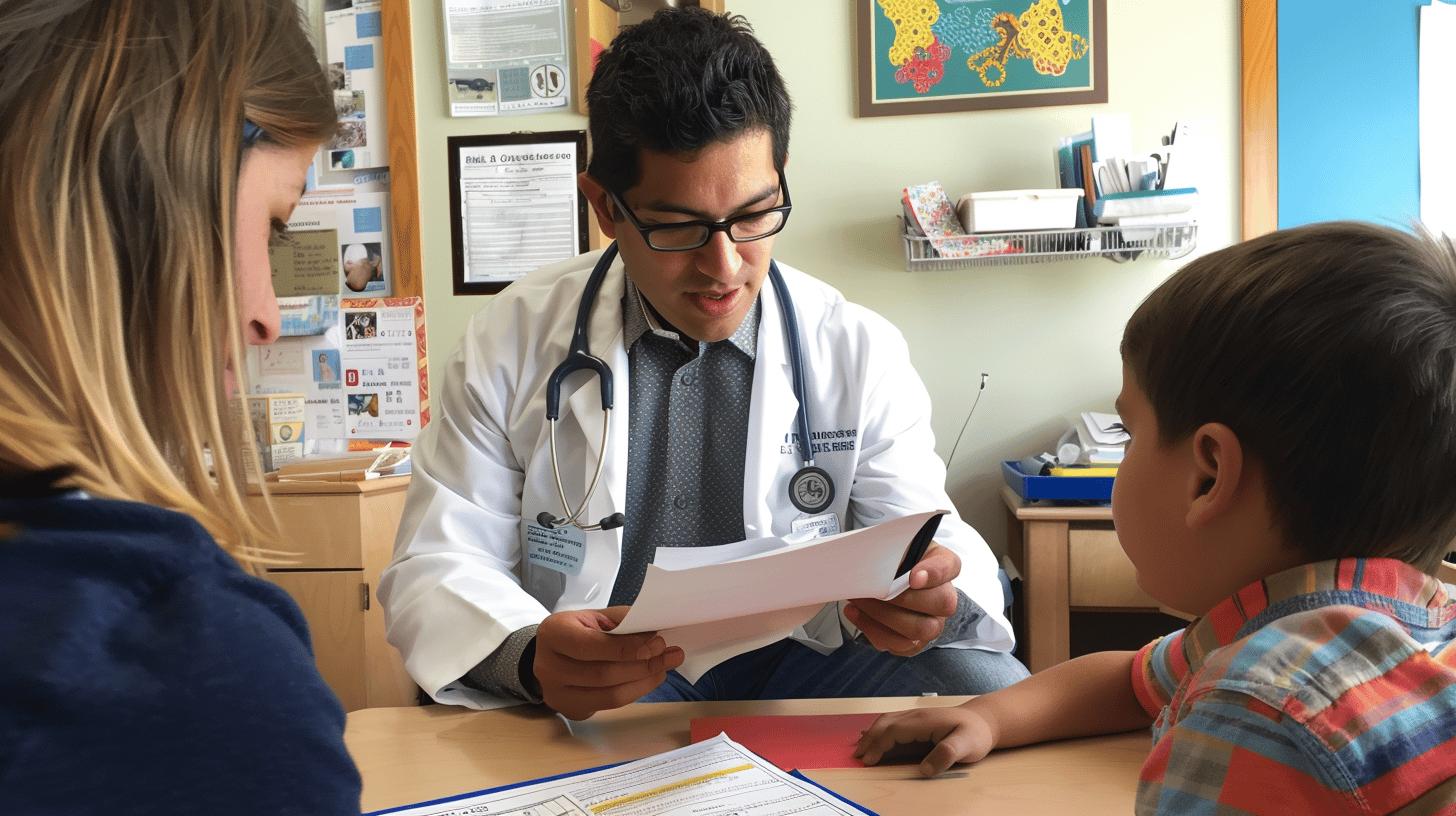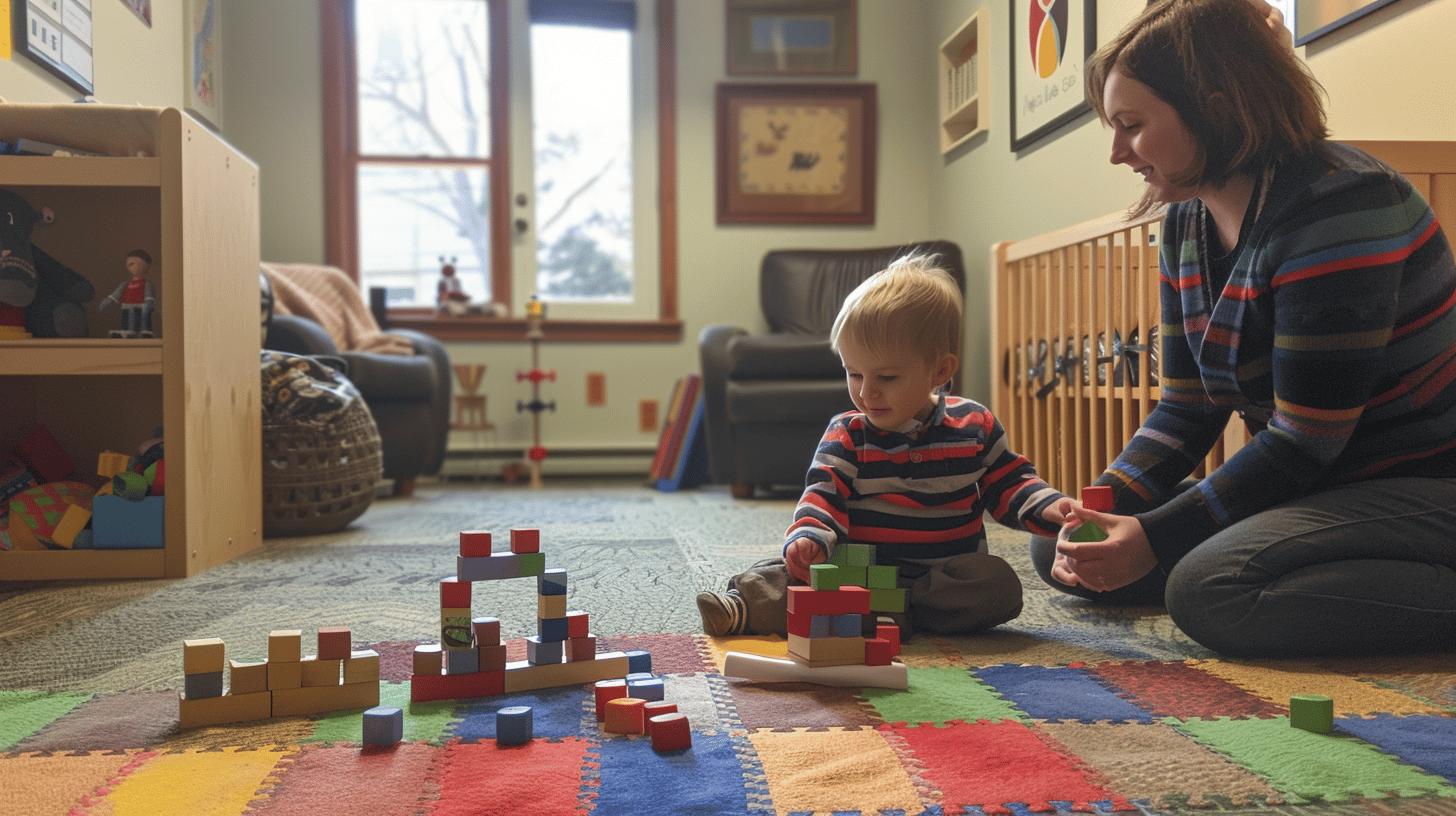Are you grappling with the difference between Global Developmental Delay (GDD) and Autism Spectrum Disorder (ASD)? It’s common for parents to feel overwhelmed by these terms, yet understanding the distinctions is crucial for effective early intervention. This article breaks down the key differences, guiding you through the symptoms, diagnostic criteria, and treatment options. Knowing the specifics can help you provide better support to your child and navigate the journey more confidently. Let's delve into the essential insights to better understand GDD and autism.
Understanding Global Developmental Delay (GDD)
Global developmental delay (GDD) involves significant delays in a child's developmental milestones across cognitive, motor, social, and language domains. This condition affects around 10-15% of young children. Persistent developmental delays require medical attention to ensure an accurate diagnosis and appropriate intervention. GDD encompasses a range of delays but is not a form of autism. Children with GDD might show delays in multiple areas, but their challenges do not fit the specific diagnostic criteria for autism spectrum disorder (ASD).
Key characteristics of GDD include delays in the development of motor skills, such as sitting, walking, or coordination, as well as cognitive skills like problem-solving and understanding instructions. Social interaction and language development are also commonly affected. Unlike ASD, which is characterized by specific neurological differences and behavioral patterns, GDD is a broader term that refers to delays across various developmental domains.
Common symptoms of GDD include:
- Delayed milestones in motor skills (e.g., sitting, walking)
- Difficulty with speech and language development
- Challenges in social interaction
- Problems with cognitive skills (e.g., memory, problem-solving)
- Delays in self-care skills (e.g., feeding, dressing)
The potential causes of GDD are varied and can include genetic factors, complications during pregnancy or birth, exposure to toxins, and other environmental influences. Sometimes, the exact cause remains unknown. Early detection and intervention are crucial for providing the necessary support to help children with GDD reach their full potential.
Understanding Autism Spectrum Disorder (ASD)

Autism Spectrum Disorder (ASD) is a neurological difference that impacts social communication, social interaction, and behavior. It includes a range of symptoms that vary in severity. Individuals with ASD often exhibit repetitive behaviors and may have unique ways of learning, paying attention, or reacting to different sensations. The symptoms of autism typically appear during infancy or early childhood and can be reliably diagnosed by age two.
ASD is characterized by specific neurological differences, which can affect how an individual processes information. These differences often manifest in challenges with understanding and using language for social purposes, forming and maintaining relationships, and engaging in imaginative play. Unlike global developmental delay (GDD), which involves delays across multiple developmental domains, ASD primarily affects social and communication skills, though some children may also experience developmental delays.
Common signs of autism include:
- Difficulty with social interactions (e.g., avoiding eye contact)
- Delayed or unusual speech and language development
- Repetitive behaviors (e.g., hand-flapping, rocking)
- Strong preference for routines and resistance to change
- Hyper- or hypo-sensitivity to sensory inputs (e.g., light, sound)
- Intense focus on specific interests or activities
Early diagnosis and intervention are crucial for children with ASD. Early identification allows for timely support and tailored interventions, which can significantly improve developmental outcomes. Effective early interventions often include speech therapy, occupational therapy, and behavioral interventions that focus on improving social skills and communication. Recognizing the signs of autism early and seeking professional evaluation can help ensure that children receive the support they need to thrive.
Comparing Symptoms and Developmental Patterns: GDD vs Autism
Global Developmental Delay (GDD) and Autism Spectrum Disorder (ASD) share some overlapping features, such as developmental delays and challenges in social interaction. However, they are distinct conditions with unique characteristics. GDD is a broader term that encompasses significant delays in multiple developmental domains, including cognitive, motor, social, and language skills. Children with GDD may show delayed milestones like sitting, walking, or talking compared to their peers. In contrast, ASD is characterized by specific neurological differences that primarily affect social communication, interaction, and behavior. While some children with ASD may also experience developmental delays, these delays are not as universally present as in GDD.
Comparing symptoms, GDD generally manifests as a delay in reaching developmental milestones across various domains. For example, a child with GDD might have difficulty with motor skills and speech simultaneously. ASD, on the other hand, includes core behavioral symptoms such as repetitive behaviors, restricted interests, and difficulties with social communication. Although some ASD symptoms can overlap with GDD, the presence of repetitive behaviors and restricted interests is more indicative of autism. Additionally, children with ASD may exhibit a preference for routines and have unique sensory sensitivities, which are less common in GDD.
| Symptom | GDD vs. ASD |
|---|---|
| Delayed motor skills | Common in GDD, variable in ASD |
| Speech and language delays | Common in both, but more specific patterns in ASD |
| Social interaction challenges | Present in both, but more severe in ASD |
| Repetitive behaviors | Rare in GDD, common in ASD |
| Restricted interests | Rare in GDD, common in ASD |
| Sensory sensitivities | Less common in GDD, frequent in ASD |
GDD and ASD can co-occur, meaning a child may exhibit symptoms of both conditions. This co-occurrence can complicate diagnosis and intervention, as each condition may require different therapeutic approaches. Understanding the distinctions and overlaps between GDD and ASD is crucial for parents and healthcare providers to develop effective, individualized support plans that address the unique needs of each child.
Diagnostic Criteria for GDD and Autism

Persistent delays in multiple developmental areas signal the need for medical attention to ensure an accurate diagnosis for Global Developmental Delay (GDD). Diagnosis typically involves a comprehensive evaluation that looks at a child’s developmental history and milestones. Key areas assessed include cognitive, motor, social, and language skills. Children with GDD often display significant delays in these domains compared to their peers. Specialists such as pediatricians, neurologists, and developmental psychologists are usually involved in the diagnostic process to rule out other conditions and confirm GDD.
Early identification and intervention are critical for children with GDD. Diagnostic criteria focus on delays that are significant and persistent enough to impede everyday functioning. For instance, a child who struggles with basic self-care tasks like feeding and dressing, alongside difficulties in speech and motor skills, may be diagnosed with GDD. While the exact cause of GDD can be varied and sometimes unknown, a thorough evaluation helps determine the best course of action for intervention and support.
Diagnostic tools or tests for GDD include:
- Developmental screening tools (e.g., Ages and Stages Questionnaires)
- Neurodevelopmental assessments
- Genetic testing
- Hearing and vision tests
- Neuroimaging (e.g., MRI, CT scans)
Autism Spectrum Disorder (ASD) includes core behavioral symptoms that typically appear during infancy or early childhood. The diagnostic criteria for ASD are outlined in the Diagnostic and Statistical Manual of Mental Disorders (DSM-5). These criteria focus on deficits in social communication and interaction, alongside restricted, repetitive patterns of behavior, interests, or activities. Diagnosis also considers the severity of these symptoms and their impact on daily life.
Evaluating ASD involves a multi-disciplinary approach. Specialists assess a child’s developmental history, observe behavior, and often use standardized tools like the Autism Diagnostic Observation Schedule (ADOS) or the Autism Diagnostic Interview-Revised (ADI-R). Early diagnosis is crucial for ASD, as timely intervention can significantly improve outcomes. Interventions often include speech therapy, occupational therapy, and behavioral therapies aimed at enhancing communication, social skills, and adaptive behavior.
Understanding the diagnostic criteria for both GDD and ASD is essential for parents and healthcare providers to provide timely and effective support. Accurate diagnosis helps in tailoring interventions that address the specific needs of each child, promoting their overall development and well-being.
Treatment and Support Strategies for GDD and Autism
Early intervention is crucial for aiding the development of children diagnosed with autism or global developmental delay (GDD). The earlier a child receives support, the better the chances of improving their developmental outcomes. Early intervention programs often include therapies tailored to address specific developmental delays, helping children build essential skills during critical developmental windows. For both GDD and autism, early intervention can lead to significant improvements in communication, social interaction, and cognitive skills.
The benefits of early intervention extend beyond immediate developmental gains. For children with GDD, early support can help bridge developmental gaps, enabling them to achieve milestones closer to their peers. For children with autism, early intervention can mitigate the impact of core symptoms, such as difficulties in social communication and repetitive behaviors. By starting intervention early, parents and caregivers can help children develop the skills necessary for greater independence and a higher quality of life.
Treatment and support strategies for GDD include:
- Speech and language therapy
- Occupational therapy
- Physical therapy
- Special education services
- Behavioral therapy
- Developmental pediatric consultations
Treatment and support strategies for ASD include:
- Applied Behavior Analysis (ABA)
- Speech therapy
- Occupational therapy
- Social skills training
- Sensory integration therapy
- Cognitive-behavioral therapy (CBT)
Tailored care plans and support services are essential for both GDD and autism. Leaf Complex Care, for instance, provides personalized care plans that respect individual needs and rights. These plans typically involve a comprehensive assessment of the child's strengths and challenges, followed by the implementation of targeted interventions. Support services may also include family education and training, helping parents and caregivers understand how to best support their child's development. Through tailored care plans, children with GDD and autism can receive the specific support they need to thrive.
Prognosis and Long-term Outcomes for GDD and Autism

The prognosis for Global Developmental Delay (GDD) can vary widely depending on the underlying cause and the effectiveness of early interventions. In many cases, developmental delays are temporary and children can catch up to their peers with appropriate support and therapy. Early intervention is crucial for improving outcomes, as it helps children develop essential skills and reach their full potential. Children with GDD who receive timely and targeted support often show significant progress in cognitive, motor, social, and language domains.
Autism Spectrum Disorder (ASD), on the other hand, is a lifelong condition. The long-term outcomes for individuals with autism depend on the severity of symptoms and the level of support they receive. Early diagnosis and intervention are vital for enhancing the quality of life for children with autism. With proper support, many individuals with ASD can achieve significant progress in communication, social interaction, and adaptive behaviors. Tailored interventions such as speech therapy, occupational therapy, and behavioral therapy play a crucial role in helping individuals with autism lead fulfilling lives.
Factors influencing long-term outcomes for both conditions:
- Early intervention: Timely support significantly improves developmental outcomes.
- Individualized therapy plans: Tailored interventions address specific needs.
- Family support and involvement: Active participation from family members enhances progress.
- Access to educational and social services: Comprehensive support systems contribute to better long-term outcomes.
Final Words
Navigating global developmental delay (GDD) and autism spectrum disorder (ASD) requires understanding their unique features and differences. GDD involves broad delays across cognitive, motor, social, and language domains, while ASD is marked by specific behavioral and neurological characteristics.
Recognizing the symptoms, knowing the diagnostic criteria, and implementing early intervention are pivotal in managing both conditions. Early support can lead to significant improvements in development.
Global developmental delay vs autism involves more than recognizing differences; it's about proactive and informed care. Positive strides can be made with the right approach and timely intervention.
FAQ
What is global developmental delay (GDD)?
Global developmental delay (GDD) involves significant delays in a child's developmental milestones across cognitive, motor, social, and language domains. GDD affects roughly 10-15% of young children.
Can you have global developmental delay and autism?
Yes, a child can have both global developmental delay (GDD) and autism. These conditions can overlap but are distinct in their characteristics.
What are the symptoms of global developmental delay?
Common symptoms of GDD include:
- Delayed motor skills (crawling, walking)
- Delayed speech and language skills
- Difficulty in social interactions
- Poor coordination
- Cognitive delays
Is global developmental delay a disability?
Yes, GDD can be considered a disability as it involves significant delays in multiple areas of development.
Can global developmental delay look like autism?
Yes, GDD can sometimes resemble autism due to overlapping symptoms like delays in social interaction and communication skills.
Is GDD curable?
GDD is not curable, but early intervention and support can help manage and improve developmental delays.
What treatment options are available for global developmental delay?
Treatment options for GDD may include:
- Speech therapy
- Occupational therapy
- Physical therapy
- Special education services
- Behavioral therapy
What is the difference between autism and developmental delay?
Autism is a neurological condition affecting social communication and behavior, while developmental delay refers to delays in reaching developmental milestones in various areas.
What is the life expectancy for someone with global developmental delay?
Life expectancy for individuals with GDD varies widely and depends on the underlying cause and severity of the condition.
Is my child autistic or delayed?
Diagnosing whether a child is autistic or experiencing developmental delays requires a comprehensive evaluation by healthcare professionals, often involving multiple diagnostic tests and observations.


